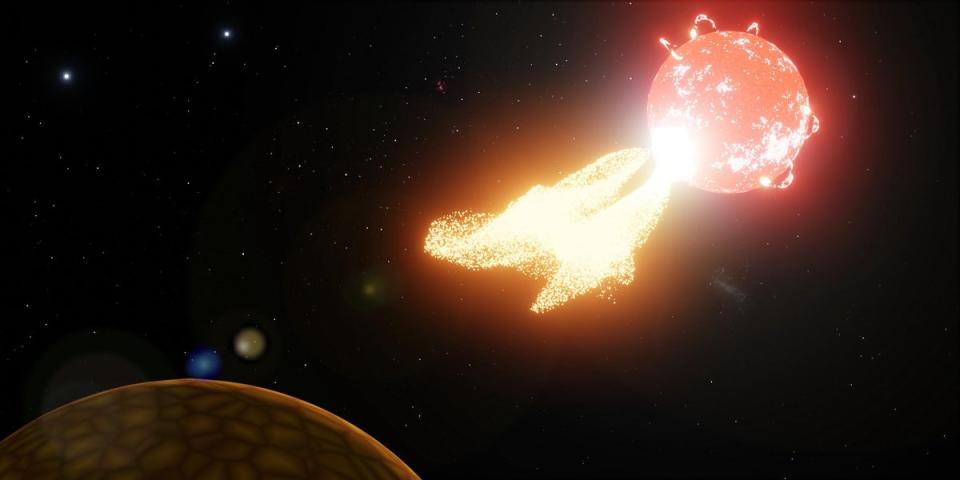Scientists make major breakthrough in search for aliens – and its first discovery is a disappointment

Scientists have made a major breakthrough in the search for alien life – but its first discovery has proved disappointing for anyone hoping to meet extraterrestrials.
The new research allows astronomers to detect space weather around nearby stars that are not our own Sun, and assess planets that are not in our own solar system.
But the first of those weather reports that have been taken from our nearby neighbours – Proxima Centauri, just 4.2 light years away – look like bad news.
"Astronomers have recently found there are two 'Earth-like' rocky planets around Proxima Centauri, one within the 'habitable zone' where any water could be in liquid form," said Andrew Zic from the University of Sydney.
“But given Proxima Centauri is a cool, small red-dwarf star, it means this habitable zone is very close to the star; much closer in than Mercury is to our Sun.”
That would mean those planets would be “sterilised” by dangerous ionising radiation that came from their Sun.
Space weather is a key part of how habitable a planet may be – not just elsewhere in the universe, but on Earth, too. While we are able to gather relatively detailed information about our own Sun and its weather, it has been difficult to produce space weather reports for other more distant worlds, which is key for knowing whether they might be liveable.
The new study, published in The Astrophysical Journal, shows there is a link between optical flares and radio bursts in other solar systems. That link could therefore be used to produce reports on space weather elsewhere in the universe.
"Our own Sun regularly emits hot clouds of ionised particles during what we call 'coronal mass ejections'. But given the Sun is much hotter than Proxima Centauri and other red-dwarf stars, our 'habitable zone' is far from the Sun's surface, meaning the Earth is a relatively long way from these events," Mr Zic said.
"Further, the Earth has a very powerful planetary magnetic field that shields us from these intense blasts of solar plasma."
However, the research suggests that conditions will be difficult, not just at Proxima Centauri but elsewhere through the galaxy, too.
"It seems likely that the galaxy's most common stars - red dwarfs - won't be great places to find life as we know it," Mr Zic said.

 Yahoo Finance
Yahoo Finance 